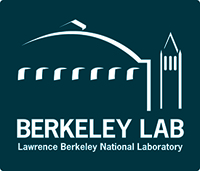Adapted from a news release by NOIRLab.
Newswise — Mapping the night sky is essential for understanding our universe. Both researchers and amateur astronomers can now access a new atlas with detailed information on more than 380,000 galaxies: the Siena Galaxy Atlas (SGA). The collection, which provides precise measurements of the locations, shapes, and sizes of large nearby galaxies, promises to be a boon to future astronomical inquiry and is freely accessible online for all to use. The research was published today in the Astrophysical Journal Supplement.
The Siena Galaxy Atlas compiles data from three surveys completed between 2014 and 2017 known as the DESI Legacy Surveys. These observations were carried out to identify galaxy targets for the Dark Energy Spectroscopic Instrument (DESI), an international project managed by the Department of Energy’s Lawrence Berkeley National Laboratory (Berkeley Lab). Data were collected at Cerro Tololo Inter-American Observatory (CTIO) and Kitt Peak National Observatory (KPNO), both Programs of NSF’s NOIRLab, and the University of Arizona’s Steward Observatory.
“The light from large, nearby galaxies can confuse our view of the distant universe, which we need to measure to understand and explain dark energy – the mystery force that is accelerating the expansion of our universe,” said David Schlegel, a researcher at Berkeley Lab and the co-lead of one of the DESI Legacy Surveys. “So one goal with the atlas was to catalog, model, and – where possible – subtract the light of these nearby galaxies from our DESI observations, and it’s been very successful. In making this atlas, we also got a detailed view of nearby galaxies, which is useful in other ways.”
The surveys captured images in optical and infrared wavelengths to chart a total area of 20,000 square degrees – nearly half of the night sky, making the SGA among the largest galaxy surveys. Besides the sheer number of objects recorded, the data in the SGA also achieves a new level of accuracy and is the first such resource to provide data on the galaxies’ light profiles.
“Nearby large galaxies are important because we can study them in more detail than any other galaxies in the universe; they are our cosmic neighbors,” said John Moustakas, professor of physics at Siena College. “Not only are they strikingly beautiful, they hold the key to understanding how galaxies form and evolve, including our very own Milky Way galaxy.
The SGA builds on several centuries of efforts to chart the night skies. The iconic Catalogue des Nébuleuses et des Amas d'Étoiles (Catalogue of Nebulae and Star Clusters), published in 1774 by French astronomer Charles Messier, was a major milestone, as was the New General Catalogue of Nebulae and Clusters of Stars, published in 1888 by John Louis Emil Dreyer. More recently, in 1991, astronomers assembled the Third Reference Catalog of Bright Galaxies (RC3). Several other valuable galaxy atlases have been published over the past two decades, but most of them draw from the photographic-plate measurements in the RC3, or are missing significant numbers of galaxies. Since the SGA uses digital images captured with highly sensitive instruments, it represents a substantial improvement in both data quality and completeness.
“Previous galaxy compilations have been plagued by incorrect positions, sizes and shapes of galaxies, and also contained entries which were not galaxies but stars or artifacts,” said Arjun Dey, a NOIRLab astronomer and co-lead of a DESI Legacy Survey. “The SGA cleans all this up for a large part of the sky. It also provides the best brightness measurements for galaxies, something we have not reliably had before for a sample of this size.”
This versatile resource will drive progress in numerous branches of astronomy and astrophysics by helping scientists find the best galaxy samples for targeted observation. For example, the SGA will enhance research into how patterns of star formation vary across different galaxies, the physical processes underlying the diverse array of morphologies that galaxies display, and how the distribution of galaxies is related to how dark matter is spread across the universe. By acting as a map, the SGA will also help astronomers pinpoint the sources of transient signals like gravitational waves and understand the events that give rise to them.
The DESI Legacy Surveys used state-of-the-art instruments on telescopes operated by NOIRLab: the Dark Energy Camera Legacy Survey (DECaLS), carried out using the DOE-built Dark Energy Camera (DECam) on the Víctor M. Blanco 4-meter Telescope at CTIO in Chile; the Mayall z-band Legacy Survey (MzLS) with the Mosaic3 camera on the Nicholas U. Mayall 4-meter Telescope at KPNO; and the Beijing-Arizona Sky Survey (BASS) with the 90Prime camera on the Bok 2.3-meter Telescope, which is operated by Steward Observatory and hosted at KPNO. The DESI Legacy Imaging Surveys data, as well as a queryable copy of the full Siena Galaxy Atlas, are served to the astronomical community via the Astro Data Lab science platform and Astro Data Archive at NOIRLab’s Community Science and Data Center (CSDC). The SGA contains additional data from a survey by NASA’s Wide-field Infrared Survey Explorer (WISE) satellite.
###
Founded in 1931 on the belief that the biggest scientific challenges are best addressed by teams, Lawrence Berkeley National Laboratory and its scientists have been recognized with 16 Nobel Prizes. Today, Berkeley Lab researchers develop sustainable energy and environmental solutions, create useful new materials, advance the frontiers of computing, and probe the mysteries of life, matter, and the universe. Scientists from around the world rely on the Lab’s facilities for their own discovery science. Berkeley Lab is a multiprogram national laboratory, managed by the University of California for the U.S. Department of Energy’s Office of Science.
DOE’s Office of Science is the single largest supporter of basic research in the physical sciences in the United States, and is working to address some of the most pressing challenges of our time. For more information, please visit energy.gov/science.



